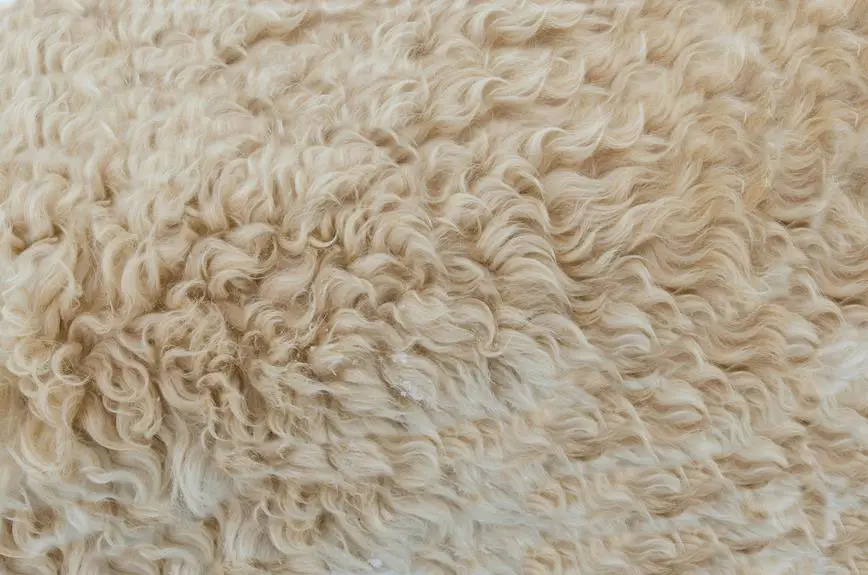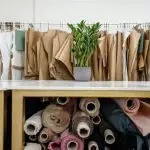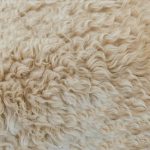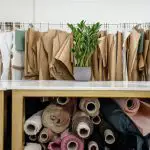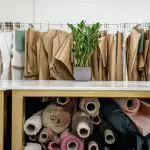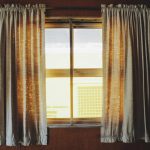When you're deciding between damask and brocade, it's essential to consider both their unique qualities and how they fit into your specific needs. Damask offers a refined elegance with its subtle patterns, while brocade delivers a bold, luxurious presence that can transform any space. Each fabric has distinct advantages, whether you're focusing on durability or maintenance ease. So, which one aligns better with your style and purpose? The answer might not be as straightforward as you think, and exploring their key differences could reveal more than you expected.
Table of Contents
Overview of Damask
Damask is a luxurious fabric known for its intricate patterns and reversible design, making it a popular choice for elegant home furnishings and clothing. When you touch damask, you can feel the quality in its soft texture, which often combines silk, cotton, or linen. This fabric's unique weaving technique creates a rich visual appeal, as the patterns emerge through the interplay of light and shadow.
You'll find damask used in various applications, from table linens to upholstery, showcasing its versatility. Its durability means it withstands daily use while maintaining its refined look. If you're considering damask for your home, it's ideal for adding sophistication to any space.
One of the standout features of damask is its ability to be both bold and subtle. Depending on the color and pattern you choose, it can serve as a statement piece or blend seamlessly into your decor. Plus, the reversible nature allows you to change up the look without needing to invest in new fabric.
Overview of Brocade
Brocade has a rich history and origin that you might find fascinating.
Its unique fabric characteristics make it a popular choice for various uses, from upholstery to fashion.
Let's explore what sets brocade apart and how it's crafted.
History and Origin
Often regarded as a luxurious fabric, brocade has its roots in ancient weaving techniques that date back to the Byzantine Empire. During this time, skilled artisans created intricate patterns using gold and silver threads, elevating the fabric to a symbol of wealth and power. As trade routes expanded, brocade spread throughout Europe and Asia, captivating nobility and royalty.
In the Middle Ages, brocade became a staple in the wardrobes of the elite. Its opulent appearance made it a favorite for ceremonial garments, tapestries, and upholstery. You'll find that this fabric was often woven with elaborate designs, showcasing motifs inspired by nature, mythology, and religious themes.
By the Renaissance, brocade had firmly established itself as a symbol of luxury. Various regions, particularly Italy and France, began to develop their unique styles, which further enriched the fabric's history.
As you explore the evolution of brocade, you'll notice how it adapted to the changing tastes and technologies of different eras. Today, while it may not be as widely used as in the past, brocade continues to evoke a sense of grandeur, reminding us of its rich heritage.
Fabric Characteristics and Uses
Recognized for its rich texture and ornate designs, brocade is a fabric that adds a touch of opulence to various applications, from fashion to home décor.
You'll find brocade's luxurious appearance makes it a popular choice for high-end garments and furnishings. Its intricate patterns, often featuring gold or silver threads, create a stunning visual impact that stands out.
Here are some key characteristics and uses of brocade:
- Durability: Brocade is typically heavier and more durable than other fabrics, making it well-suited for items that receive frequent use.
- Versatility: You can use brocade in a variety of applications, including formal wear, upholstery, and even accessories like bags and shoes.
- Elegant Drapability: The fabric drapes beautifully, enhancing the silhouette of garments and adding sophistication to home textiles like curtains and cushions.
- Unique Patterns: Each piece of brocade often features unique designs, allowing you to express your personal style or add a touch of glamour to your space.
Incorporating brocade into your wardrobe or home can elevate your aesthetic, making it an excellent choice for anyone seeking elegance.
Key Differences Between Fabrics
When comparing damask and brocade, you'll find distinct characteristics that set these luxurious fabrics apart.
First, consider their weave patterns. Damask features a smooth, reversible design with intricate patterns created by contrasting yarns. This gives damask a subtle sheen, making it perfect for elegant applications like table linens and drapery.
On the other hand, brocade boasts a more raised pattern, often with metallic threads woven in. This results in a rich, textured appearance that's visually striking, making brocade ideal for upholstery and statement pieces in interior design.
Next, think about the fabric composition. Damask is typically made from silk, linen, or cotton, offering a softer feel.
Brocade, however, often incorporates heavier materials, including silk and polyester, which contributes to its durability and opulent look.
Advantages of Damask
When you consider fabric options, damask stands out for its elegant design aesthetics that can elevate any space.
Its versatility allows you to use it in various applications, from upholstery to table linens.
Plus, the durability and longevity of damask mean you're making a smart investment for the long term.
Elegant Design Aesthetics
Damask fabrics boast intricate patterns that effortlessly elevate any space with their timeless elegance. These designs create an air of sophistication that can transform your interiors into something truly remarkable. When you choose damask, you're not just adding a fabric; you're enhancing the overall aesthetic of your environment.
Here are some advantages of damask's elegant design aesthetics:
- Rich Patterns: The detailed motifs in damask can range from floral to geometric, providing a wide variety of options to suit your style.
- Luxurious Texture: The woven texture adds depth and richness, making it visually appealing and inviting to touch.
- Color Versatility: Damask fabrics come in various colors, allowing you to find the perfect shade to complement your existing decor.
- Timeless Appeal: With a history that dates back centuries, damask maintains a classic look that never goes out of style, ensuring your space remains chic for years to come.
Versatile Fabric Applications
The versatility of damask fabric makes it an ideal choice for various applications, from elegant drapes to stunning upholstery. You'll find that its intricate patterns and luxurious feel elevate any space. Whether you're decorating your home or designing a special event, damask offers a range of uses that can suit your needs perfectly.
Take a look at some popular applications of damask fabric:
| Application | Description |
|---|---|
| Home Decor | Use for curtains, tablecloths, and cushions to add sophistication. |
| Fashion | Ideal for evening gowns and formal attire, giving a timeless look. |
| Event Decorations | Perfect for weddings and upscale events, creating an elegant atmosphere. |
Durability and Longevity
With its tightly woven fibers and intricate patterns, damask boasts exceptional durability that ensures it withstands the test of time. You'll find that this fabric isn't only beautiful but also practical for everyday use.
Here are some advantages that highlight damask's resilience:
- Fade Resistance: Damask's colors tend to stay vibrant for longer, even when exposed to sunlight, making it ideal for curtains or upholstery.
- Stain Resistance: Its dense weave helps repel spills and stains, so you won't have to stress about accidents during dinner parties.
- Wear and Tear: Unlike some fabrics that easily fray or rip, damask's strong fibers endure frequent use without losing their integrity.
- Easy Maintenance: Most damask fabrics are machine washable, allowing you to keep them looking fresh and new with minimal effort.
Advantages of Brocade
Brocade offers a luxurious texture and intricate designs that can elevate any space or garment, making it a popular choice for both upholstery and fashion. Its rich, raised patterns create a three-dimensional effect that draws the eye and adds depth to any design. You'll find that this fabric is often associated with opulence, perfect for creating statement pieces that stand out.
Another advantage of brocade is its versatility. You can use it for a variety of applications, from drapery to clothing, allowing you to experiment with different styles while maintaining a cohesive aesthetic. Plus, brocade's durability means it can withstand wear and tear, making it suitable for high-traffic areas or everyday wear.
Brocade is also relatively easy to care for compared to some other luxurious fabrics. Many brocade options are machine washable or can be spot-cleaned, making maintenance straightforward. Additionally, its timeless appeal ensures that it never goes out of style, allowing your investment to last for years.
When you choose brocade, you're not just selecting a fabric; you're choosing a statement that combines beauty, durability, and versatility.
Choosing the Right Fabric
When selecting the right fabric for your project, consider factors like texture, durability, and how well it complements your design vision. Both damask and brocade offer unique qualities, but knowing your specific needs will help you decide which is better for you.
Here are four key factors to keep in mind:
- Texture: Think about the feel of the fabric. Damask has a softer, smoother texture, while brocade is often heavier and more textured.
- Durability: If you're looking for longevity in high-traffic areas, brocade might be your best bet due to its sturdier composition. Damask is beautiful but may not hold up as well in certain settings.
- Design Compatibility: Consider your overall design. Damask patterns are usually more subtle and elegant, whereas brocade features bold, intricate designs that can make a statement.
- Care Requirements: Finally, think about maintenance. Brocade can require more careful cleaning due to its texture, while damask is generally easier to care for.
Frequently Asked Questions
Can Damask or Brocade Be Used for Outdoor Furniture?
You can use damask or brocade for outdoor furniture, but they're not ideal. These fabrics aren't typically water-resistant or UV-protected, so they might fade or wear quickly in harsh outdoor conditions. Consider specialized outdoor fabrics instead.
How Do I Clean Damask and Brocade Fabrics?
To clean damask and brocade fabrics, gently vacuum them with a soft brush attachment. For stains, dab with a mild detergent solution, then blot with a clean cloth. Always test on a hidden area first.
Are There Eco-Friendly Options for Damask and Brocade?
Yes, you can find eco-friendly options for both damask and brocade. Look for organic fibers, sustainable production methods, and dyes that are free from harmful chemicals. These choices benefit the environment while still offering beautiful fabric.
What Are the Historical Origins of Damask and Brocade?
You'll find that damask originated in ancient China, while brocade has roots in the Byzantine Empire. Both fabrics evolved through trade, showcasing intricate designs and luxurious materials, reflecting the artistry of their respective cultures.
Can I Find Damask and Brocade in Different Colors and Patterns?
Yes, you can definitely find damask and brocade in a variety of colors and patterns. They're available in vibrant hues and intricate designs, allowing you to choose what best suits your style and decor.
- Top 5 Most Breathable Fabrics for Summer Clothing - June 8, 2025
- Which Natural Fabrics Are Best for Breathability? - June 8, 2025
- What Are the Best Moisture-Wicking Fabrics for Hot Weather? - June 8, 2025

